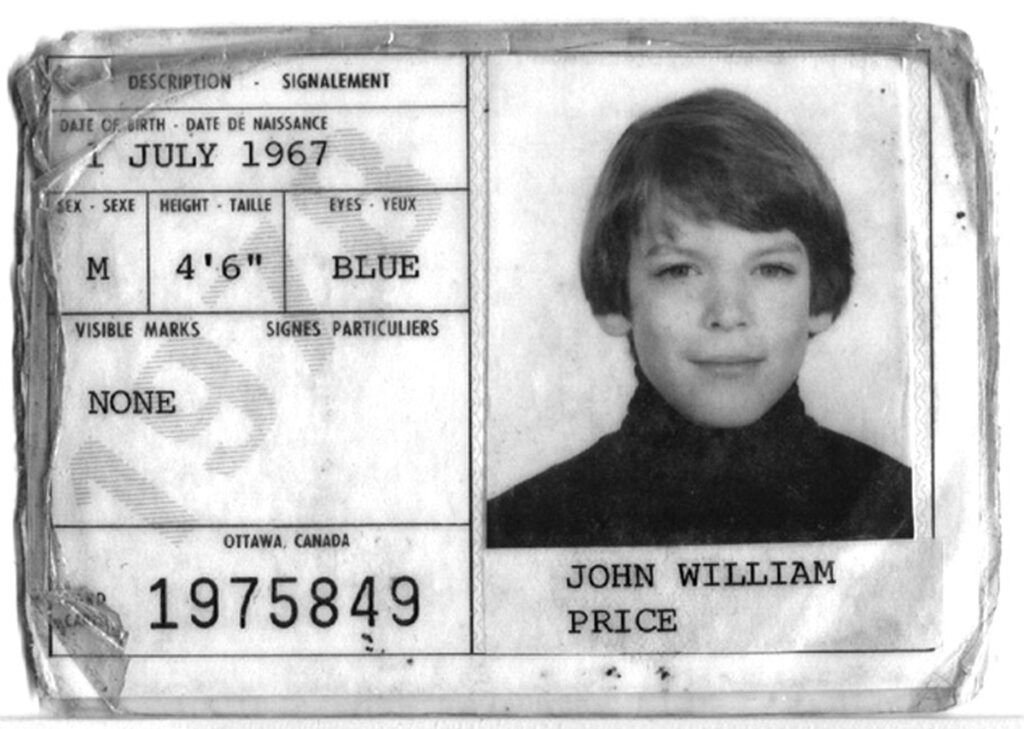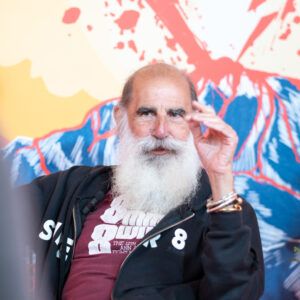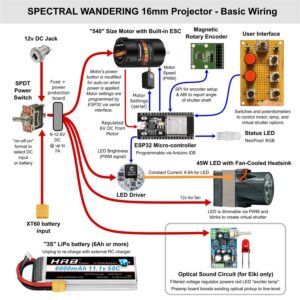
By Mike Hoolboom
Mike Hoolboom: Livia Bloom, writing in “Filmmaker” penned these words: “An eerie mood pervades the smart, surprising Sea Series #10 (10 minutes 2011) by John Price, one of the only films in the 2011 Wavelengths experimental program at the Toronto International Film Festival explicitly inspired by world events. An intertitle explains that the film was made ‘10,190 km from Fukushima’ on May 21, 2011, two months after the deadly Japanese earthquake, tsunami and nuclear disaster, and a week after a leak was reported at the nuclear power plant that lurks just outside Toronto. Located on the shores of Lake Ontario, Pickering is one of the largest nuclear plants in the world. For Price, the date held the added significance of having been designated by a religious group as the day of rapture. To obtain lush, saturated color, Price develops his 35mm and 16mm footage himself; he also used water from Lake Ontario, the star of Sea Series #10, in that film’s chemical process. The first movement depicts distant sailboats doubling and shifting under a dancing, blue-tinted sun; later shots show tiny dead sardines lapping at the shore, and richly contrasting black-and-white footage of beachgoers at play in Pickering’s ominous shadow.”
John Price: I went out to Pickering and shot close to the nuclear plant. It’s the tenth in a suite of sea movies. They were inspired by a photographic series by Hiroshi Sugimoto called Seascapes. Sugimoto: “Every time I view the sea, I feel a calming sense of security, as if visiting my ancestral home; I embark on a voyage of seeing.”
Mike Hoolboom: Why did you go out there?
John Price: I’d been listening to the radio and hearing reports about impending nuclear doom. And the rapture was supposed to happen on May 21, 2011, the end of all days, when the hand of God would scoop up the chosen ones. Lea and the kids had other plans, so I thought I might as well be on the beach to film the spectacle.
MH: And then you took the footage home to your basement lab. Can you talk about what you did or would that be revealing your secrets?
JP: There are no secrets, just chemistry. It’s a chemical chain that’s not designed for the particular stock I was using, so it opens up the stock to unforeseen reactions. What’s going to happen this time? Will there be an image? I like to work with out-of-date reversal stocks, and it can be hard to predict exactly what the results will be, and I like that. Sometimes there’s only grain, and maybe there’s an image way underneath all that, but even if you put tons of light into it, you can’t make out what is happening. Some people groove on that, but I’m not one of them.
MH: You want to represent.
JP: I think that’s the project. Representing what’s out there and seeing how these materials hold the experience.
MH: Why is it necessary to work on film, now that even Kodak has filed for bankruptcy? Is the film image closer to the way you see or remember?
JP: It’s a very specific way of working. What makes film specific? When you see a film projected on a screen it feels timeless, it doesn’t feel like the present day. As opposed to digital video that represents the present in a hyper-real way. When I shoot my kids on film, it feels out of time, like the moments could be decades old. Is it only nostalgia because super-8 (or 16mm) images have been codified as home movies? I’m not sure. Have we been colonized by our memory of memories?
MH: In chemical cinema, there’s a space before the image. The image doesn’t appear before you see it, the way that it does in digital video. The image is already there, you point your camera and before you see it, the image is already in the camera. Whereas in photochemical cinema you have to make an approach, and set up the clumsy machines, and once the image is received by the emulsion you have to wait. There is time to process, to digest. There is an approach and a digestion. The digital image, on the other hand, exists in an uninterrupted present. Everything is already an image or is about to become an image. Whereas a film image has a before and after, a temporal succession, and exists in a relation of what Freud named fort und da. Near and far. The cinema spectator is alone with other people – both near and far. The image is small, and then is projected large on screen. The spectator also projects themselves onto the screen, and feels close and far. This back and forth movement is the relation between the individual and society, between past and present. Perhaps these are old fashioned terms.
The internet, on the other hand, is always there, you can turn your computer on and off, but the internet is still humming. It’s an endless surface. You can’t make an approach to the internet, and you can’t process it in order for the image to appear. Time is simultaneous, instead of successive. And this, I think, is a fundamentally political difference. Everything is already a picture in the digital world.
JP: Yes, but what does it mean? How does that apply to where things go, how people remember, how people are?
MH: You can’t remember if there’s only now. What creates memory is the space before and after the picture. All we have are archives now, which are a simulacrum, a prosthetic memory, an externalized version of memory. The nature of the new technology is to make everyone into an archivist. But ironically, it means that everyone’s archives will disappear because they won’t be readable or playable. This generation will leave very little behind and that will be good. Have you ever tried to retrieve files from an old computer? Imagine what those files will look like in a hundred years. Digital junkyard hieroglyphs.
JP: That’s why I like working with physical materials that I can touch with my hands, and see them projected, knowing it’s not a one and a zero. You can see it, look at it, hold it. But if you break it down to the level of representation, maybe that’s not important. A sheep is a sheep, right? So why does it matter? It’s an ongoing question. Why document with this material rather than that?
MH: Does working with film instead of video relate to your kids somehow?
JP: Maybe it’s just habit. It’s a desire not to have so much. It’s a matter of distilling moments and having a particular memory. You don’t have a record of every memory, but a few survive that summarize and bear witness to the rest. Film provides a physical archive of what happened.
MH: Like a relic, a shroud.
JP: But how much different is that from a hard drive? A roll of film can burn up and so can a hard drive. Are they just different ways of making a picture? You can go to the cinema today and see a 2K projection and most people can’t feel the difference. In commercial cinema most films get digitized and massaged then spat back onto film if they’re going to be projected on film. Even if the original was shot on film, it’s already gone through the muddling/meddling process, so does it really matter?
I shoot with film partly because of the machines I have – my cameras and lenses do very specific things that I really like. If I had the latest greatest video and lens technology that would be OK, but the results would look like everything else, because everyone’s using the same stuff. And that’s not so interesting. I like to have an assortment of ways of looking at things. I have these long telephoto lenses that make pictures you’ve never seen before. It’s a different kind of searching.
MH: You’re often busy shooting movies for various independent directors. How does this “commercial,” for-hire work relate to your personal movies?
JP: When I turn on the camera for other people I want to make sure it’s about something, I’m not just making more pictures. For example, when I shot in the arctic I wanted to get at the pace of how things go, which is really slow. I set up a camera and framed an intersection in a small community and let it roll and watched what happened for ten minutes. That shot gives you more of a sense of how things go than taking a ten second excerpt of the shot and cutting it with whatever the movie is supposed to be about.
Recently I was in the United States shooting a documentary for Liz Marshall. I asked myself: what is this film about? It’s about how we do and don’t relate to animals. How do you show that? It’s all around, it’s everywhere. We go to New York and there’s a horse meat restaurant. There’s a high design store with antlers all over the walls. And then you shoot animals. I’ll just sit down here and see what happens with the animals. Some come up and look at you closely, so you have to get down and be with the chickens. Is that going to help people change their attitudes towards eating meat or becoming concerned about where their food is coming from? I have no idea.
MH: Getting down with the chickens?
JP: Yeah. Seeing pictures of chickens being chickens. What pictures should come before and after? Eisenstein please help me. But I think that’s Liz’s project – finding a way through the pictures in a way that speaks her story. And I’m happy to be in that moment and reflect on these issues because I have kids and these questions matter.
Generally I’m thinking in sequences… how the moments might be joined together but before that it’s about connecting with whatever is around me. I try to get a sense of what is in this moment with the camera. How do I feel right now and how can I represent that with this machine? That’s always the work, whether it’s for myself or for others.





